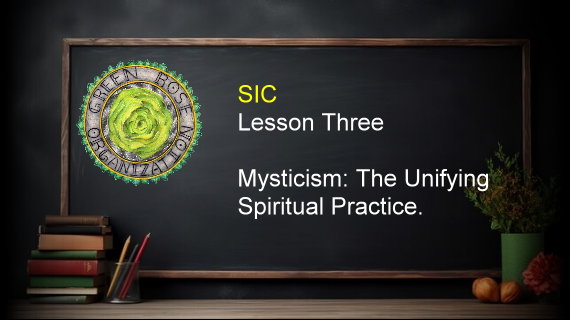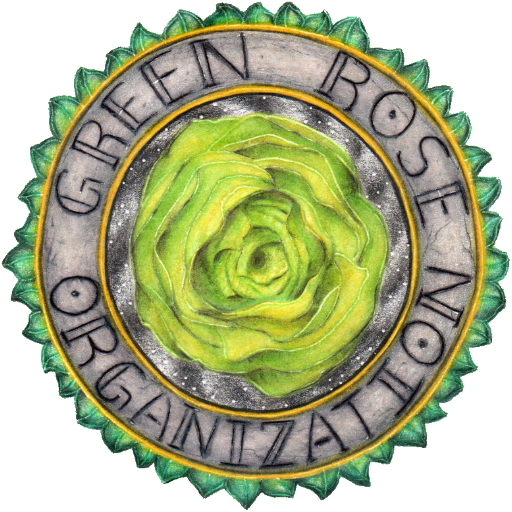
MYSTICISM: THE UNIFYING SPIRITUAL PRACTICE
A DETAILED EXPLANATION OF MYSTICISM AS AN AUTHENTIC SPIRITUAL PRACTICE & WORLDVIEW
Mysticism is a spiritual practice and worldview that seeks direct, experiential connection with the ultimate reality, divine presence, or truth. This connection transcends ordinary perception, logic, and doctrinal boundaries, focusing on personal transformation and the ineffable aspects of existence. Mysticism often appears across religions and philosophical traditions, forming a core thread of esoteric wisdom. Key Features of Mysticism: 1. Direct Experience of the Divine or Ultimate Reality: Mysticism prioritizes direct, personal experience over theoretical or ritualistic approaches. This experience is often described as: Unity with the Divine: A state of oneness or merging with God, universal consciousness, or the ultimate truth. Ineffable Awareness: A realization beyond words or concepts, where the limits of language and intellect are transcended. Transcendence: Rising above the material and temporal world to access a deeper, spiritual realm. 2. Transformation of Self: Mystics often undergo profound personal transformation, involving: Purification: Releasing ego, attachments, and desires to align with the divine or absolute reality. Illumination: Gaining insight or awakening to the true nature of existence. Union: Achieving a harmonious connection with the divine or higher self. 3. Common Mystical Practices: While practices vary, mystics use specific techniques to facilitate their experiences: Meditation and Contemplation: Focusing inward to still the mind and connect with the divine. Asceticism: Voluntary simplicity and self-discipline to transcend material distractions. Prayer and Chanting: Invoking the divine through words, sounds, or mantras. Symbolism and Visualization: Using sacred symbols, imagery, or metaphors to access deeper meanings. 4. Universality Across Traditions: Mysticism is found in various religions and spiritual systems, including: Christian Mysticism: Centered on love and union with Christ, as seen in the writings of St. Teresa of Avila, St. John (Juan) of the Cross and Meister Eckhart. Sufism (Islamic Mysticism): Focused on love, self-annihilation, and union with God, as exemplified by Rumi and Al-Ghazali. Hindu Mysticism: Emphasizing self-realization and unity with Brahman through yoga and meditation. Buddhist Mysticism: Seeking enlightenment and the dissolution of the self through meditation and mindfulness. Kabbalah (Jewish Mysticism): Exploring the hidden aspects of God and creation through esoteric study. Taoist Mysticism: Attuning to the flow of the Tao, the ultimate reality, and balancing opposites like yin and yang. Philosophical Foundations of Mysticism: 1. Metaphysical Assumptions: Mysticism often assumes that reality has layers, with a divine or ultimate truth underlying the material world. Mystics explore this higher reality as the source and essence of existence. 2. Epistemological Approach: Mystics view direct experience as a valid and essential form of knowledge, emphasizing intuition and inner awareness over external observation or reasoning. 3. Ethical Implications: Mystical paths frequently advocate for virtues such as humility, compassion, and detachment, fostering harmony with the self, others, and the divine. Stages of Mystical Development: Many mystical traditions describe a progression of stages in the mystical journey: 1. Awakening: An initial realization or glimpse of divine presence. 2. Purification: Removing obstacles, such as selfishness or ignorance, that block spiritual growth. 3. Illumination: Gaining profound insights into the divine nature of reality. 4. Dark Night of the Soul: A challenging period of spiritual dryness or testing, where the seeker confronts inner darkness. 5. Union: A final, transformative state of oneness with the divine, characterized by peace, bliss, and insight. Mysticism’s Universal Themes: Despite cultural differences, mysticism unites spiritual traditions through shared themes, such as: Interconnectedness: The recognition that all existence is interwoven and emanates from a common source. Transcendence of Ego: Letting go of individual ego to embrace universal consciousness. Sacred Symbolism: Using metaphors, parables, and sacred geometry to convey transcendent truths. Mysticism’s Role in Comparative Religion: Mysticism often serves as a unifying thread across religious traditions, offering insights into: Common Human Aspirations: The quest for meaning, transcendence, and union with the divine. Interfaith Dialogue: Mysticism provides a foundation for understanding and bridging divides between different faiths. Mysticism often resides in the esoteric layer, focusing on profound, transformative experiences and wisdom hidden beneath the surface of doctrinal teachings.

